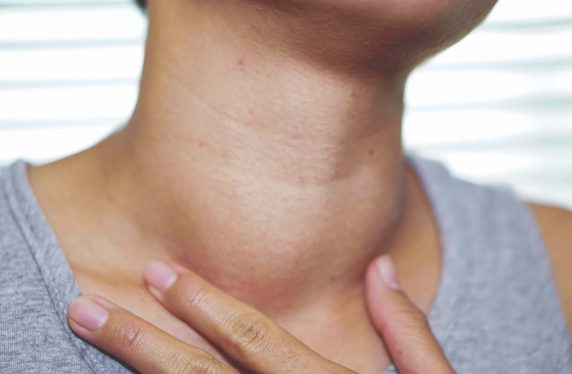Guideline of the month: Thyroid disease

NICE has published new guidance on assessing and managing thyroid disease, which it says will help to standardise diagnosis and treatment in the UK.
The guideline covers when to consider testing for thyroid disease and gives detailed advice on treatment and monitoring.
Key points on assessment for GPs
- Explain to people with thyroid disease who need treatment that the response is usually good but that if treatment is changed, symptoms may not improve for several weeks or months.
- Give people with thyroid disease information on their condition, treatment, monitoring needs and when to seek advice from their doctor.
- Include information about the role of the thyroid gland and what different thyroid function tests mean
- Advise people with hypothyroidism on how and when to take levothyroxine.
- Advise people with thyrotoxicosis on the causes, the suitability of different treatments and the possibility of needing thyroid hormone replacement if treatment leads to lifelong hypothyroidism.
- Advise those with goitre about red flag symptoms and treatment options.
- Consider tests for thyroid dysfunction if there is a clinical suspicion of thyroid disease but bear in mind that one symptom alone may not be indicative of thyroid disease.
- Consider tests for thyroid dysfunction in people with depression or unexplained anxiety, and in children and young people with abnormal growth or unexplained changes in behaviour or school performance.
- Be aware that in menopausal women, symptoms of thyroid dysfunction may be mistaken for menopause.
- Consider measuring thyroid-stimulating hormone (TSH) alone for adults if secondary thyroid dysfunction (pituitary disease) is not suspected.
- If the TSH is above the reference range, measure free thyroxine (FT4) in the same sample.
- If the TSH is below the reference range, measure FT4 and free tri-iodothyronine (FT3) in the same sample.
- Consider measuring both TSH and FT4 for:
- Adults when secondary thyroid dysfunction (pituitary disease) is suspected
- Children and young people
- If the TSH is below the reference range, measure FT3 in the same sample
Practical considerations
The guidance outlines when GPs should consider testing for thyroid disease and what advice they should give to patients. GPs will need to ensure they are giving patients with thyroid disease comprehensive information about their condition and its treatment – this may mean pointing patients to additional resources, such as websites or leaflets.
GPs will need to use their judgment to decide when to test for thyroid disease in patients who present with broad symptoms, such as anxiety or behaviour change.
The guideline
NICE. NG145 Thyroid disease: assessment and management. London, NICE, 2019.
Pulse October survey
Take our July 2025 survey to potentially win £1.000 worth of tokens

Visit Pulse Reference for details on 140 symptoms, including easily searchable symptoms and categories, offering you a free platform to check symptoms and receive potential diagnoses during consultations.









